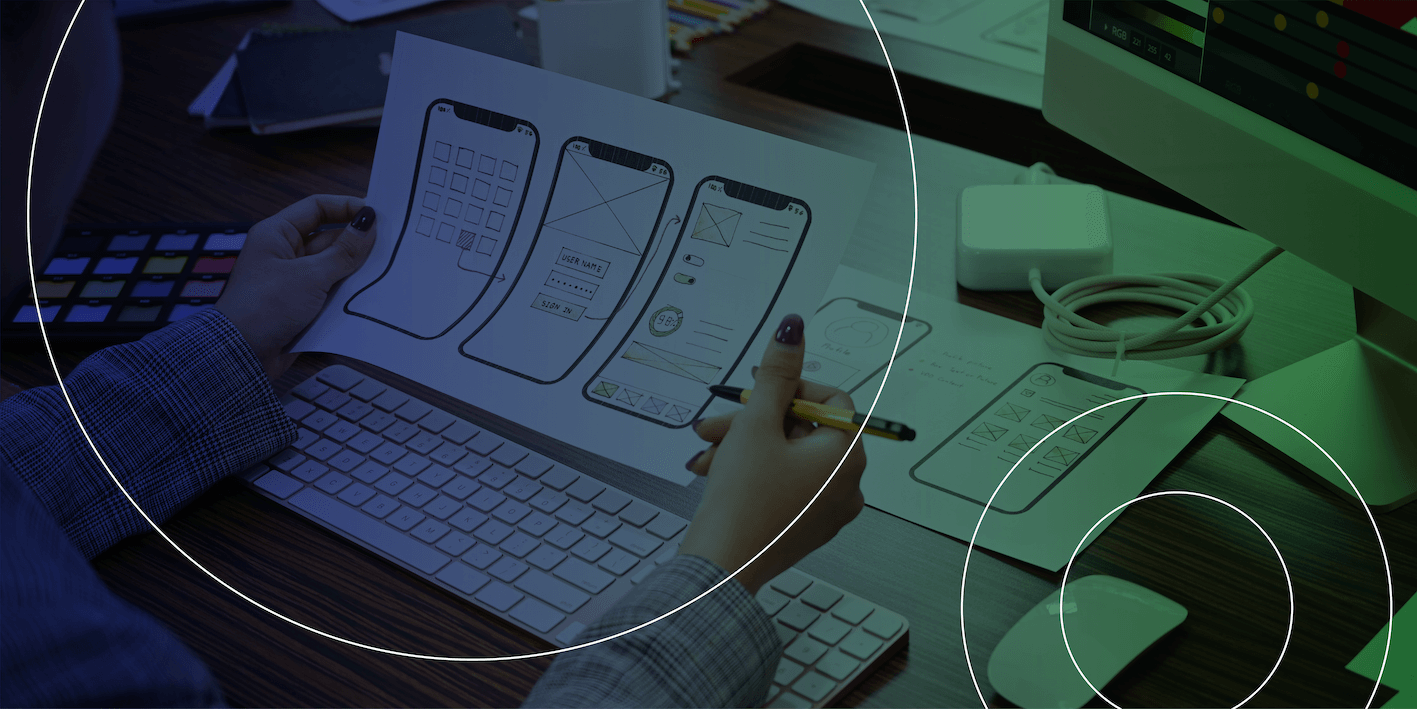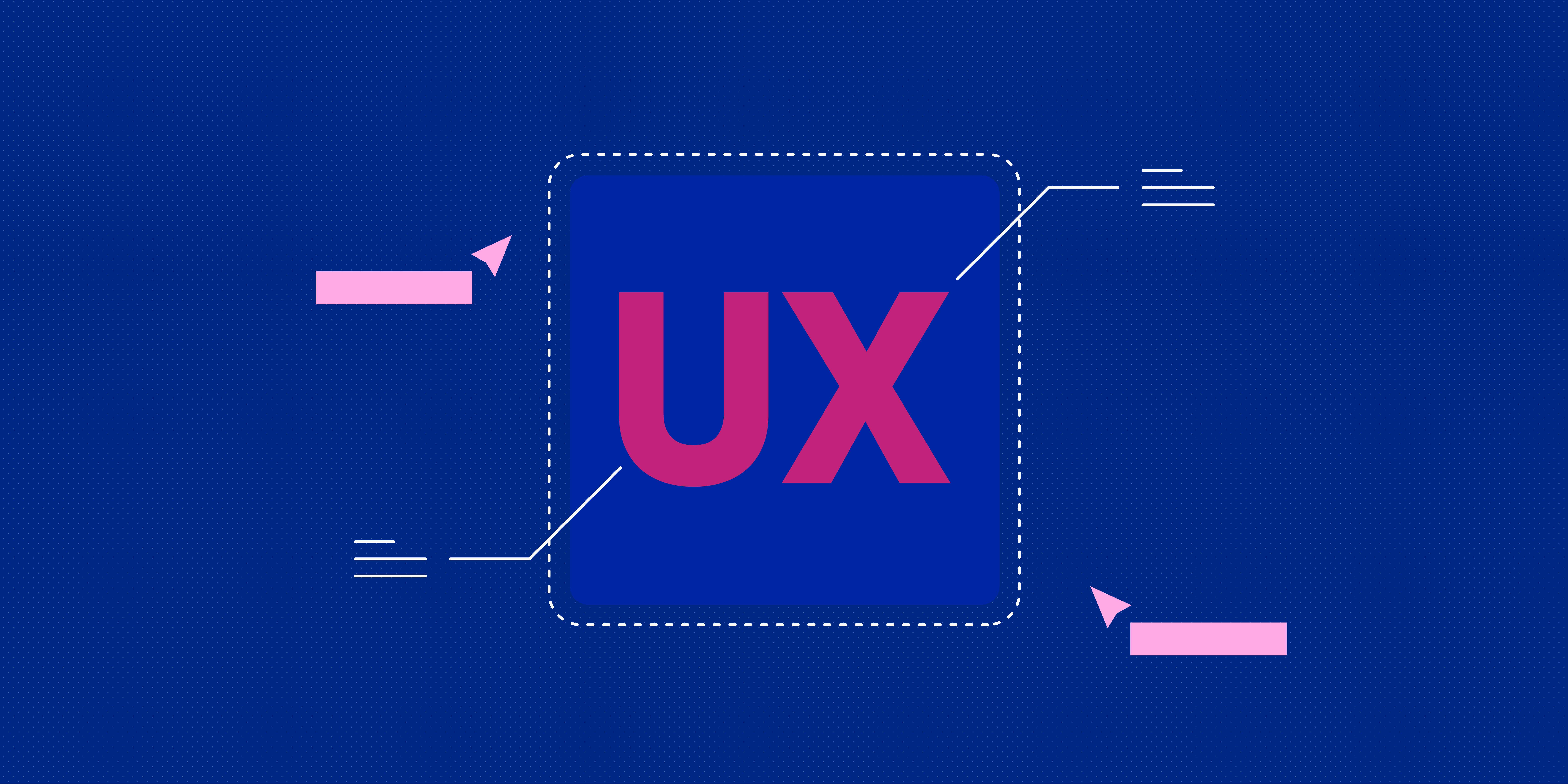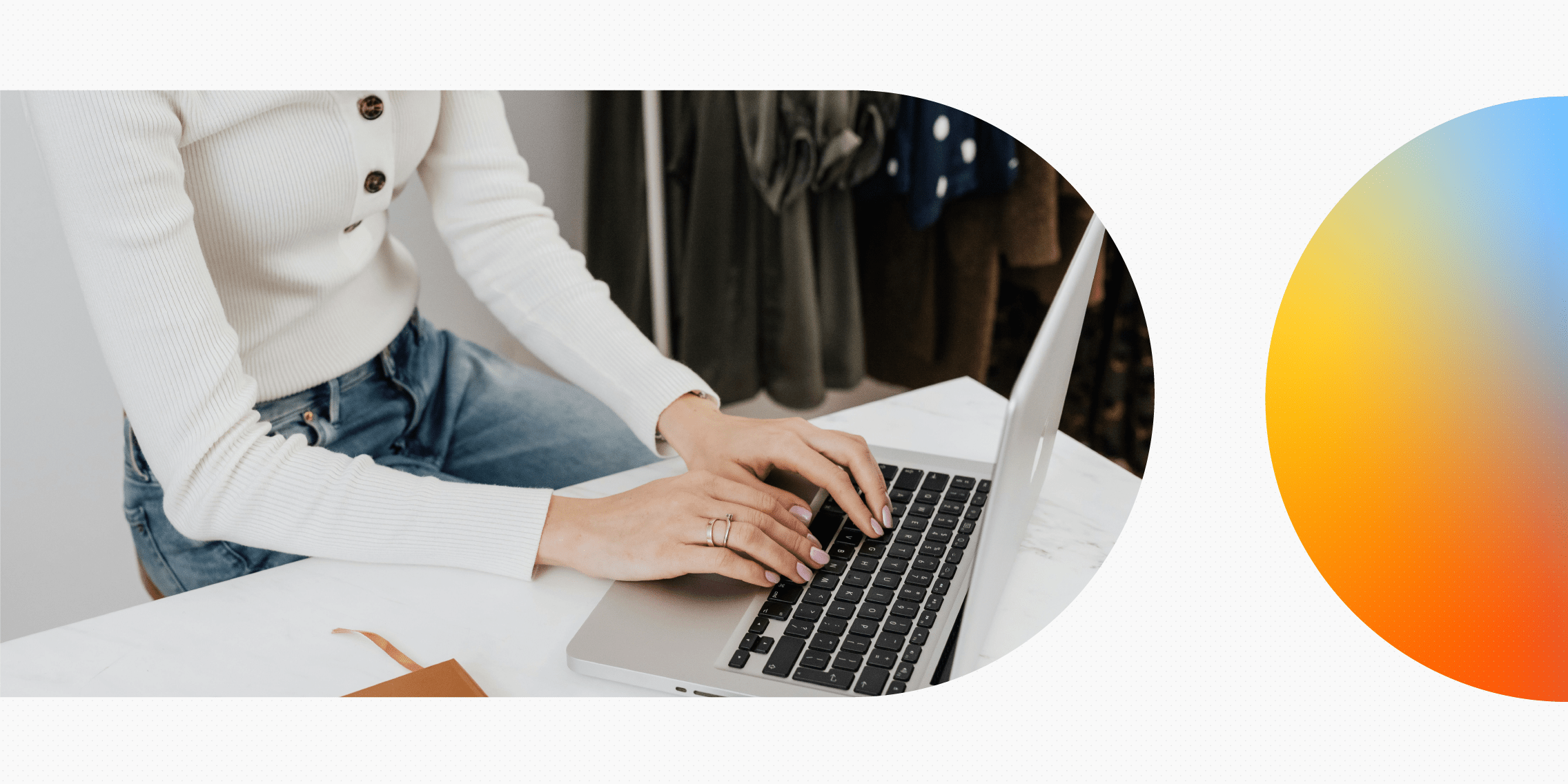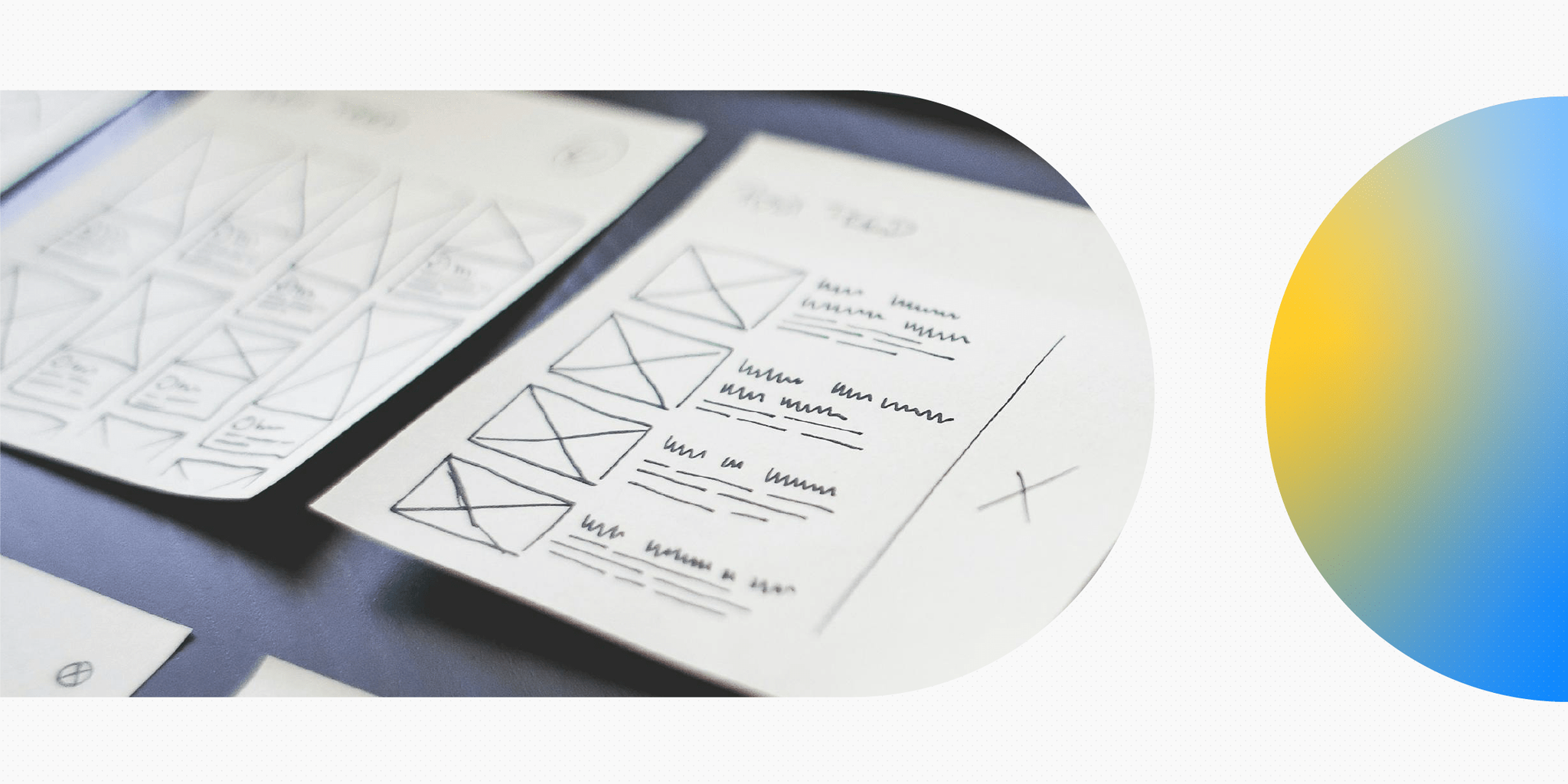Are you curious about what a day in the life of a UX designer looks like?
In reality, every UX designer’s day is unique — it all depends on the type of company, how big or small the UX team is and the designer’s exact job title… as well as several other factors.
Still, if you’re going for an in-house UX design role, there are specific tasks and responsibilities that will typically shape your average working day. To help give you a glimpse of how that might look, we’ve put together an example of a day in the life of a UX designer.
Here’s what else you’ll find in this article:
- What is the role of a UX designer?
- What is a typical day in the life of a UX designer? Tasks and to-dos
- What factors will impact how your day looks as a UX designer?
- An example day in the life of an in-house UX designer
What is the role of a UX designer?
The role of a UX designer is to create end-to-end experiences that are enjoyable, user-friendly and valuable for real users. These user experiences cover all the different touchpoints a person interacts with whenever they use a particular product or service.
Consider a banking app that enables customers to check their account balance, make transfers, set up a budget and pull up a summary of how they’ve spent their money each month. The UX designer (or the UX design team) behind the app is responsible for ensuring that each and every step in the user’s encounter with the app contributes to a positive user experience overall.
This covers:
- Strategy: Determining what goals the app should meet for both the customer/end user and the business.
- Research and scope: Understanding who the app is for (i.e. who is the target user?) and what they require in terms of features and functionality.
- Structure: Figuring out how the app will be structured and the steps the user must take in order to navigate it and complete their goals (for example: what steps would they take to transfer money from one account to another?)
- The product blueprint: Considering the finer details of how each app screen will be laid out, as well as the order and hierarchy of different elements on the page (i.e. buttons, text and menus).
- The ‘surface’ design: Designing the look, feel, and interactivity of the app itself. This is typically done in collaboration with a UI designer (you can read more about how UX and UI designers work together here).
UX designers are problem-solvers. They don’t just design apps and websites; they spend time getting to know the target audience, identifying problems that need to be solved and coming up with solutions to those user problems. The design of the final solution (for example, a banking app) is just one part of the UX designer’s work.
If you’re new to UX design, it’s worth referring to this guide for a more comprehensive introduction to the topic: What does UX stand for and what does it mean?
What is a typical day in the life of a UX designer? General tasks and to-dos
Broadly speaking, a typical day in the life of a UX designer is based on the various stages of the UX design process. The UX process takes a UX project through:
- Research: Interviewing and/or observing real users to understand what they want from a particular product or service, as well as the problems they come up against. The research stage may also involve competitor research to see what solutions are already on the market.
- Defining the problem: Narrowing your findings down to just one user problem you will seek to solve.
- Ideation: Coming up with ideas for potential solutions and deciding which ones to carry forward into design and development.
- Design, prototyping and validating: Designing low-fidelity versions of your chosen solution, creating prototypes and validating (or invalidating) them through user/UX testing.
The UX process is iterative, meaning it’s never really complete. UX designers will return to different stages in the process in order to keep on top of what their end users need and to continuously improve the product accordingly, even once it’s been developed and launched.
So, based on the UX design process, a typical day in the life of a UX designer might include any of the following tasks:
- Meeting with business stakeholders to understand business goals and strategy
- Devising a UX strategy that aligns with the overarching business goals
- Commissioning/overseeing and/or conducting user research
- Analysing UX research and synthesising findings into valuable, actionable insights
- Running workshops (for example, a brainstorming session)
- Creating UX deliverables such as UX personas, empathy maps, user flows and UX documentation
- Creating wireframes, mockups and prototypes
- Running tests to validate designs (e.g. A/B tests, tree testing and usability tests, to name just a few)
- Working closely with UI designers and developers to finalise the overall look, feel and behaviour of the product
- Developing and maintaining a style guide to establish conventions and standards which should be adhered to across all UX projects
That’s not even an exhaustive list of what a UX designer does. The exact tasks and responsibilities carried out by a UX designer will vary based on different factors, which we’ll outline now.
What factors will impact how your day looks as a UX designer?
A typical day in the life of a UX designer varies greatly from one designer to the next. It all depends on:
- Your exact job title: If you’re a UX design generalist, your typical working day will likely cover the whole gamut of UX designer tasks. However, if you specialise in a particular area, such as UX research or UX writing, your focus (and your tasks) will be much narrower.
- Your seniority level: For junior UX designers, a typical day will likely involve more hands-on UX design tasks. For a senior UX designer, a typical day might focus more heavily on strategy, meetings and coordinating the team’s tasks.
- The type of role you have: A typical day in the life of a freelance UX designer will look very different to that of an in-house designer. Your average day will also vary depending on whether you work on site or remotely (as more and more UX designers are doing these days).
- Where you work: UX designers can work in all different industries, covering a variety of products and services. They can work in startups, agencies, non-profit organisations and large corporations. All of these different company types will have a different setup, determining how the UX designer works and what their day will look like.
- Who you’re working with: Another important factor to consider is who you’re working with. If you’re a solo UX designer, you’ll probably be responsible for covering the entire UX design process. If you’re one UX designer working in a large team, your responsibilities might be more focused.
All of these factors will impact what kinds of tasks you’re responsible for and how you carry out your day-to-day work.
We’ve taken a broad look at some of the tasks and responsibilities that might feature in a typical day in the life of a UX designer. Now let’s explore how an in-house UX designer might move through the working day.
An example day in the life of an in-house UX designer
In-house designers typically work for one brand and its associated product portfolio. Imagine you’re a UX designer employed full-time at a company that provides mortgage advice. Your main areas of focus are the company website (which is already up and running) and overseeing the design and launch of a new mortgage calculator app. You’re working at a young startup, so you’re currently the only UX designer on board.
Here’s how your typical working day might look.
Morning: Emails, daily catch-up meeting, reviewing UX personas and user research and sketching out app screens
9.45am: You come into the office and log onto your computer to catch up on emails and Slack messages. You check your calendar to see what meetings are scheduled for the day. You note down any messages that require action.
10am: You join the product manager, UI designer and web developer for a quick meeting. This is your daily catch-up where you run through your current priorities and share any relevant updates on your tasks.
10.30am: Time for a quick coffee break before the working day really begins!
10.45am: One of your priorities for the week is to start designing the different screens that will make up the new mortgage calculator app. But, before you start designing, you want to make sure the end user’s needs and goals are fresh in your mind. You pull up the document you created a few weeks back, which summarises your user research insights, and have another scan through your UX personas. It’s essential to always design with the user in mind. This is a good habit you’ve adopted since becoming a UX designer.
11.30am: Feeling well-versed in who your users are and what they need, you put in your headphones and grab your sketchpad and marker pens. You’re going to start with some very basic hand-drawn wireframes to experiment with different versions. Today, you’re focusing on the screens the user will move through to complete the process of creating a new account and setting up their profile in the mortgage calculator app.
12.45pm: After some intensive focus time, you’re ready for lunch. Time to head out and grab a bite to eat and some fresh air.
Afternoon: Checking the results of an A/B test, creating digital wireframes and scheduling a user testing session
2pm: In addition to designing the new mortgage calculator app, you’re also in charge of continuously monitoring and improving the UX of the company website. For the past two weeks, you’ve been running an A/B test to test two different versions of the homepage and you now want to look at the results. You log into Optimizely, the software you’ve been using to run the test and pull up the data to see which version of the homepage performed best.
2.25pm: You’ve sifted through the data and can see that version A of the website homepage is a clear winner. You’ll be sharing these results with the product manager and UI designer later on in the week, so you put together a quick slide deck outlining the details of the A/B test, including screenshots of the two different versions you were testing, what success metrics you were focusing on, the data and findings from the A/B test and next steps.
3.30pm: With your presentation ready, you head out for a quick tea break to clear your head before returning to your wireframes from earlier.
3.45pm: This morning, you created hand-drawn sketches for some of the screens that will feature in the new mortgage calculator app. Now you want to spend some time reviewing the initial ideas you came up with and turning your favourite ones into digital wireframes. You open up Figma (one of the most popular wireframing tools used by UX designers) and spend a good hour and a half creating digital wireframes based on your earlier sketches. This enables you to further refine the layout of each screen, as well as the exact size of (and spacing between) the various elements on the page.
5.15pm: You’re all wireframed out and you’re pretty happy with the results so far. You’ll continue designing the remaining screens throughout the week, ready for a first user testing session the following week. Which reminds you: you need to schedule that user testing session in! You’re going to use the Chalkmark first-click testing function (part of the Optimal Workshop suite of user research and testing tools), so you head over to the software and start setting that up. You’ll finalise the details of the test towards the end of the week once you’ve got all your initial wireframes ready.
End of the day: Wrapping up, preparing for tomorrow and taking some professional development time
5.45pm: You’re almost ready to call it a day. You have one last scan through your emails and Slack messages and note down your priorities for tomorrow.
6pm: Whenever you can, you like to end the day with some dedicated learning and development time. You’ve always been keen to add some UI design fundamentals to your skill set, so you’re in the process of completing a Professional Certificate in UI Design. You pop your headphones back in and watch through some video tutorials, making notes as you go.
6.45pm: It’s been a busy and productive day, and you even managed to make some progress on your UI design course. Time to log off and enjoy your evening!
This is just one example of how your day might look when working as a UX designer. We hope you found it insightful and are perhaps feeling even more excited to start a career in the field! Not sure where to begin? Here’s a guide for beginners showing you exactly how to start learning UX design.




